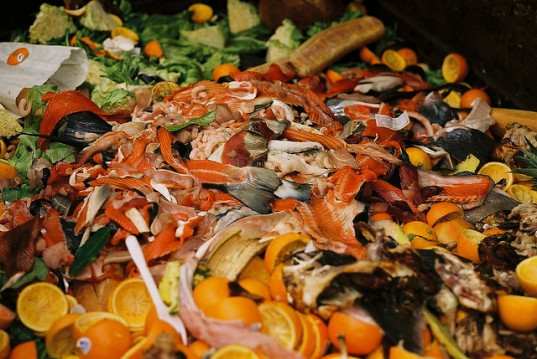Most people don’t see what happens to their trash. They throw it in a black plastic bag, toss the bag into a dumpster and the trash man collects it once a week and makes it disappear. Magic, right?
Wrong.
Most of our trash ends up in a landfill where it is buried and mixed in with decades-worth of junk. Certain items will break down over time while others are essentially just stored there, in a graveyard of forgotten items and a mountain of garbage.
In the year since China banned the import of other countries’ plastic recyclables, the global recycling industry has been in flux, resulting in plastics ending up in landfills, incinerators and littering the environment. This is causing countries and citizens across the globe to reexamine their recycling systems and highlights the need for zero waste practices.
Zero waste is the concept of eliminating the amount of trash thrown away by only purchasing reusable items. That’s a significant shift from the 4.4 pounds of trash that the average American tosses every day. But certain trends are helping make the idea of zero waste a reality in the United States. Let us have a look:
Replace Single-Use Packaging With Reusable Materials
Way too many plastic items that we use every day are meant to be used only once. And the amount of packaging that goes into shipping one box, that will simply get tossed in the garbage after the parcel is unwrapped, is astounding. In fact, 40 percent of plastic produced is packaging, which is thrown away after it arrives at your doorstep.
Plastic bag and straw bans are on the rise across the globe. Consumers are becoming more conscious of how their use of these items contributes to the trash crisis. Recent data shows that customers are more likely to buy products from brands that promote sustainable business practices.
Reduce Energy Waste By Choosing Renewable Options
Many industries are opting to reduce energy waste by pursuing renewable energy sources. U.S. manufacturers account for 30 percent of the nation’s energy consumption, which means manufacturers must take the lead in reducing fossil fuel consumption and energy waste.
The U.S. is the leader in energy waste. Americans spend $350 billion on energy costs each year, yet three-quarters of that energy goes to waste. One way to reduce the burden on our power grid — and our wallets — from all that lost energy is by switching to renewable energy sources.
Air compressors are vital to the upkeep of a successful farm, and many producers in the agricultural sector are also reducing waste by switching to high-powered air compressors that, when properly maintained, can reduce energy usage and cut costs.
Eliminate Food Waste
About 94 percent of food waste ends up in landfills, which contribute to methane gas emissions. Reducing food waste not only helps the environment, but it also decreases the amount you have to spend at the grocery store. It also helps to conserve energy, as less power is needed to grow and produce food if less is wasted.
Individual consumers can help eliminate food waste by freezing leftovers to preserve them and composting uneaten food, as opposed to tossing in the trash.
Restaurants can use these tactics and others to cut down on food waste, such as donating leftovers and properly training staff to get on board with waste reduction. They can also hire auditors to help them identify ways to reduce waste and streamline business practices.
Never Too Late to Make a Change
Though the statistics may seem disheartening, the reality is that it’s never too late to make a change in your individual or business habits to help cut down on waste and work toward the goal of accomplishing zero waste. Following these trends and implementing others is just one way to do your part to eliminate waste and protect the environment.























